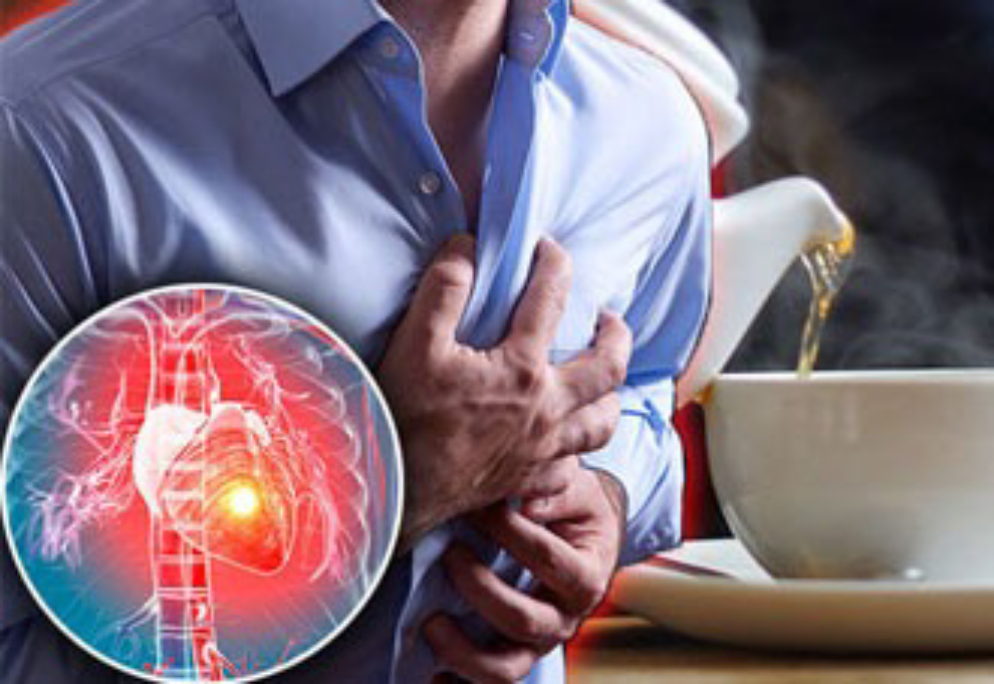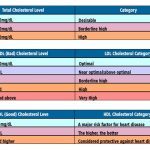Understanding IVF
Jul 25, 2024

As we all know cholesterol is a fat like substance which travels in blood stream as high density lipoprotein (HDL) & low density lipoprotein (LDL), HDL being good cholesterols & LDL as bad one.
When LDL is too much in your body it gets stick to the wall of arteries, eventually clogging them up. Narrowed or blocked arteries prevent adequate blood to reach your heart, brain and other organs which can lead to heart attack, strokes and even heart failures.
There was much hype about the role of cholesterol in causing heart disease & other diseases and recently various studies were shown to disprove the fact of important role of cholesterol in atherosclerosis heart diseases but lately American college of cardiology have said high cholesterol (LD in blood causes higher incidences of heart disease. A study published in 2016 states that elevated LDL is an established risk factor for heart disease. Researchers have mentioned that minor dietary changes such as choosing food with better fat quality could potentially reduce cholesterol and your future risk of developing heart diseases & its consequences.
Cholesterol does not only come from food, but our liver also produces it. In general high levels of HDL & low levels of LDL help reduce the risk of heart diseases.
What is Cholesterol: – It helps your body to build new cells, insulate nerves and also in producing hormones. Generally liver makes all cholesterol required by the body but it also comes from food such as milk, eggs and meats.
How does high cholesterol cause heart disease?
Too much of cholesterol in the blood starts building up in the walls of arteries, causing a process known as atherosclerosis. Due to this collection arteries become narrowed reducing blood flow to the heart muscle and ultimately complete stoppage of blood supply to particular area.
As the blood carries oxygen to your heart, if it is not enough, heart many suffer from ischemic in form of chest pain. If this blood supply to any particular area of heart get completely blocked it leads to myocardial infarction commonly known as heart attack.
There are mainly two forms of cholesterol, low density lipoprotein (LDL) or bad cholesterol & high density lipoprotein (HDL) as good cholesterol. LDL is the main source of artery clogging plaque & HDL actually help to clear cholesterol from the blood.
What are the symptoms of high cholesterol?
It does not cause any symptoms itself and that’s the reason why so many people are unaware of their high cholesterol levels. So it becomes absolutely essential to know your cholesterol numbers. Lowering cholesterol levels if they are high, lessens the risk of developing heart disease & reduces the chances of a heart attack & it’s associated deaths.
What numbers should I look for?
Some studies recommended that everyone over 20 yrs should get their lipid profile done at least once in 5 years. This profile includes – LDL, HDL, Triglycerides, VLDL & cholesterol, which are different types of lipids.
Following are the levels both desirable & undesirable:-

What affects Cholesterol levels?
Number of factors can affect cholesterol levels which include:-
Diet- Saturated facts, transfat, carbohydrates & cholesterol in the food you eat increases cholesterol levels. By reducing these substances in your diet, cholesterol can be bought down by increasing amount of fiber in diet.
Weight – overweight can increase your Cholesterol & risk of atherosclerosis by lowering weight you lower your LDL & increase your HDL levels.
Exercise – Regular exercise can lower LDL & raise HDL cholesterol. Everyday exercises of 30 minutes help you to manage your LIPID profile effectively.
Age & gender – As we get old, chances of atherosclerosis increases. Before menopause, women are somewhat protected against atherosclerosis but after menopause women’s LDL level tend to rise & incidence of heart disease becomes equal for both men and women. Your genetics determine how much cholesterol your body will make and thus this tendencies runs in families.
Medical condition – Certain medical conditions like hypothyroidism, liver disease & kidney disease can cause elevation of cholesterol levels in blood.
Medication – Certain drugs like steroids, progestins may increase bad cholesterol and decreases good cholesterol.
What is the treatment of high cholesterol?
The goal of the treatment is to lower LDL and lower risk of cardiovascular disease. At the same time we want to increase your HDL to provide you protection.
To lower bad cholesterol, eat a healthy diet, do regular exercise and keep ideal weight. Some may also need lipid lowering drugs. Your cardiologist will customize “goals” for LDL reduction based on number of risk factors you have.
Major risk factors like age (men >45 years & women >55 years), Smoking, high blood pressure, HDL <40 mg/dl, family history of CAD in first degree relatives (father, mother, brother) etc are directly associated with high risk.
If you have 0-1 risk factor – you have low to moderate risk of heart disease. In this case lifestyle modification is effective in keeping LDL in normal range.
If you have 2 or more risk factors for heart disease you are at moderate risk. Along with lifestyle modification you need to take cholesterol lowering drugs after counseling your cardiologist with controlled diet & customized exercise regime.
If you are known diabetic, heart patient or have multiple risk factor, you are definitely in high risk category. These people need cholesterol lowering drugs along with other medicine, regular exercise & diet.
LDL cholesterol goals – Risk categories which are based on framingham heart study to estimate 10 years risk for coronary artery disease (heart attack & coronary death) has been defined. The risk factors included in the calculation are age, total cholesterol HDL cholesterol, systolic blood pressure, treatment for high BP & smoking. They are as follows:-
Category I – Highest risk (10 years risk >20%). LDL goal here is to keep less than 100mg/dl for those patients with high risk (recent heart attacks those who are known CAD, peripheral vascular disease with diabetes which is poorly controlled or with metabolic syndrome should keep their LDL less than 70 mg/dl.
Category II – High risk (ten year risk 10-20%). The goal for LDL is to keep less than 130 mg/dl. Your doctor may set goal of keeping it <100 mg/dl.
Category III – moderate risk (ten year risk less than 10%). Your risk goal is less than 130 mg/dl and doctor may set it less than 100 mg/dl, if your LDL is 100-129.
Category IV – Low risk – your LDL goal is less than 160 mg/dl.
To reduce your risk of heart disease, it is important to:
Statins: Statins start by blocking production of cholesterol in liver. They are the mainstay of treatment for deranged lipid profile. They lower bad cholesterol (“LDL” and triglycerides and mildly increase HDL, the good cholesterol. They are 1st line drug in high cholesterol condition, while on statins you must know that they may cause mild memory loss, mental confusion, rise in blood pressure & blood sugar as possible side effects.
Side effect of cholesterol lowering drugs:
Muscle ache, delayed liver formation tests, skin rashes, heart burn, dizziness, abdominal pain, memory problems.
What are Transfats & Saturated Fats?
They raise LDL & lower HDL both changes leads to higher risk of heart disease. Trasnfats donot offer any nutritional value also.
Partially hydrogenated oils are main source of transfats in diet. They are in abundance in processed foods.
Food containing saturated fats like sweet treats (pastries, donuts, cookies) sugary beverages & red meat, processed meat, palm & coconut oil, butter, margarine, fried food, full cream milk, cheese, cream etc should be used infrequently and in small quantity.
Healthier food options:-
Oat &oat bran
Barley & whole grain
Beans & lentils
Nuts including walnut & almond
Citrus fruits, apple strawberries & grapes
Okra, soya bean, fish & olive oil.
Lowering Cholesterol Using Therapeutic Lifestyle Changes (TLC)
TLC is a set of lifestyle changes you can make to help lower your LDL cholesterol. The main parts of TLC are:
The TLC Diet. This is a low-saturated-fat, low-cholesterol eating plan that calls for less than 7 percent of calories from saturated fat and less than 200mg of dietary cholesterol per day. The TLC diet encourages you to choose a variety of nutritious and tasty foods. Choose fruits, vegetables, whole grains, low-fat or nonfat dairy products, fish, poultry without the skin, and, in moderate amounts, lean meats. The TLC diet recommends only enough calories to maintain a desirable weight and avoid weight gain. If LDL is not lowered enough by reducing saturated fat and cholesterol intake, the amount of soluble fiber in your diet can be increased. Certain food products that contain naturally occurring substances found in some plants (for example, cholesterol-lowering margarines) can also be added to the TLC diet to boost its LDL-lowering power.
Guide to Lowering Your Cholesterol with TLC
Losing weight if you are overweight can help lower LDL and is especially important for those with a cluster of risk factors that includes high triglyceride and/or low HDL levels and being overweight with a large waist measurement (more than 40 inches for men and more than 35 inches for women).
Physical Activity.
Regular physical activity (30 minutes on most, if not all, days) is recommended for everyone.
Even if you begin drug treatment to lower your cholesterol, you will need to continue your treatment with lifestyle changes. This will keep the dose of medicine as low as possible, and lower your risk in other ways as well. There are several types of cholesterol-lowering drugs available, including: